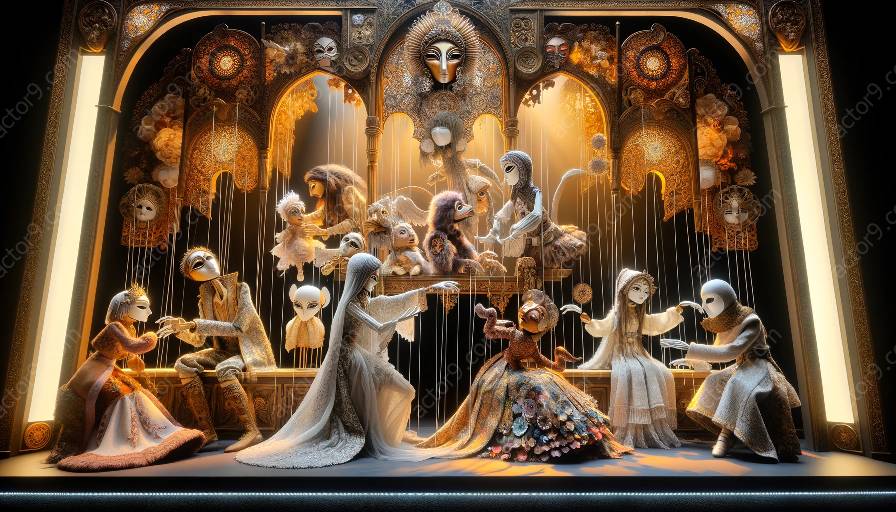When delving into the art of improvised puppetry and mask work, it's essential to understand the historical and cultural influences that have shaped these unique performance styles. Both forms have rich traditions and have been influenced by diverse cultural and historical contexts.
Historical Influences
Historically, puppetry and mask work have existed in various forms across different cultures and time periods. In many ancient civilizations, such as in ancient Egypt and China, puppetry played a significant role in religious ceremonies, storytelling, and entertainment. These early forms of puppetry often incorporated improvised elements, allowing performers to adapt and respond to the audience's reactions and create a dynamic experience.
Masks have also held cultural significance throughout history. In traditional African and Native American cultures, masks were used in ceremonial dances and rituals, embodying spiritual and mythological beings. The use of masks in performance allowed for the embodiment of characters and entities beyond the human form, providing a transformative and improvisational element to storytelling.
Cultural Influences
The influence of cultural diversity on improvised puppetry and mask work is significant. Different regions and traditions have contributed unique techniques and styles to these performance forms. For instance, the Japanese tradition of Bunraku puppetry emphasizes intricate movements and emotional expression, while Indonesian Wayang Kulit employs shadow puppetry techniques and storytelling.
Similarly, cultural influences on mask work are evident in the vibrant and elaborate masks used in traditional Chinese opera and the expressive, exaggerated masks of Commedia dell'arte in Italy. These cultural influences have resulted in diverse approaches to improvised puppetry and mask work, reflecting the values, stories, and aesthetics of different communities.
Connecting to Improvisation in Theatre
The practice of improvisation in puppetry and mask work is closely linked to the broader tradition of improvisational theatre. In contemporary theatre, improvisation has become a popular technique for creating spontaneous and engaging performances. This approach emphasizes the collaborative nature of theatre, allowing performers to respond in real-time and adapt to the ever-changing dynamics of live performance.
By integrating historical and cultural influences, improvised puppetry and mask work continue to evolve as vibrant and dynamic performance art forms. The ability to draw from diverse traditions and techniques provides practitioners with a rich tapestry of influences to explore and incorporate into their work, ensuring that these art forms remain relevant and captivating in the contemporary creative landscape.




























